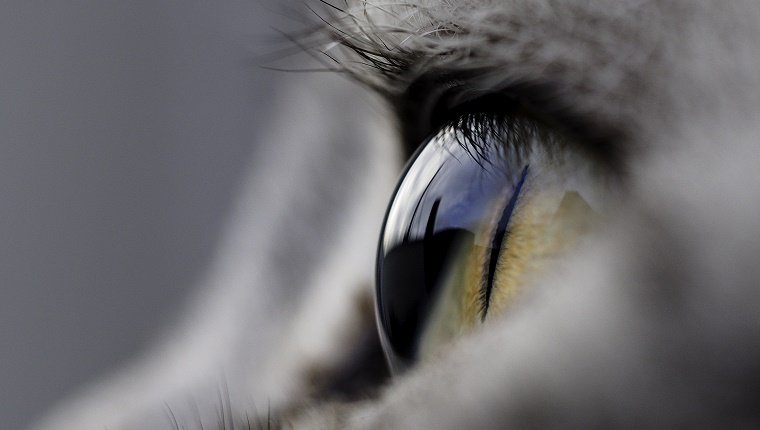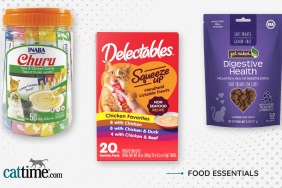A cat’s eyes are beautiful, and they can do some pretty amazing things. But those eyes are also very sensitive.
Cats can develop everything from viral infections in their eyes to glaucoma. As a cat parent, you should pay close attention to the health of your kitty’s eyes.
Here are the most important things that you should know about your cat’s vision.
Signs Of Healthy Eyes
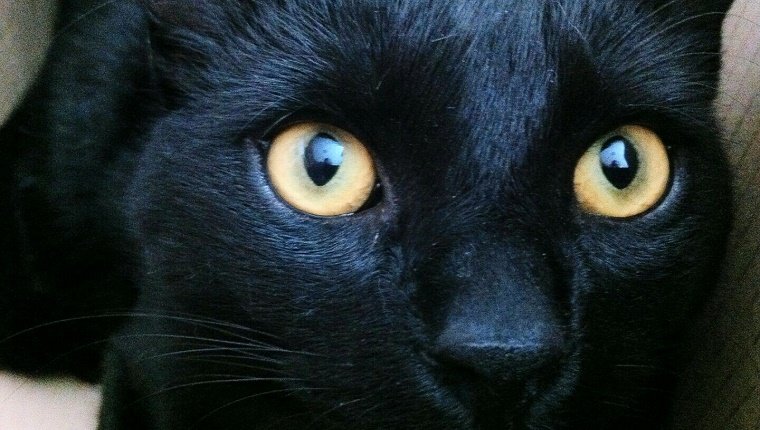
The signs of healthy cat eyes are fairly easy to spot. They include wide, open eyes that have no obvious redness or discoloration, such as brown splotches.
The pupils should be the same size. They should only be large if your cat is in low light or feeling scared.
The eyes should not produce any discharge, except for a little brown sleep in their eyes from time to time.
Signs Of Unhealthy Eyes

If you see any of these problems with your cat’s eyes, then you should take your kitty to the vet for a checkup:
- Squinting eyes: Sure, cats may squint their eyes on occasion, such as in very bright light. But if they’re never opening their eyes fully, it may be a sign that they feel pain or their eye was scratched.
- Crusty discharge: If your cat has a lot of crusty discharge around their eyes, this could be a sign that their eyes are very sick.
- Red eyes: If your cat’s eyes are red or cloudy, take your kitty to the vet.
Causes Of Eye Problems

A lot of things, from injury to illness, can cause eye problems in your cat.
These are just a few examples to keep an “eye” out for:
- Upper respiratory infections can cause eye discharge that’s pus-like. Your cat may paw at their eye if they’re feeling uncomfortable.
- Pink eye can cause your cat’s eyes to look red and swollen and have a thick discharge.
- A scratched cornea can cause your cat to blink too frequently, and it can lead to their eyes having discharge or tearing up. Allergies can also cause similar symptoms.
- FIV, FeLV, FIP, and even feline herpes can cause eye problems. Your vet may consider these possibilities if your cat’s eyes exhibit symptoms.
- Cataracts can cause your cat’s eyes to look cloudy and lead to a loss of vision.
- Glaucoma is caused by excessive fluid pressure on the eyeball. Humans can develop this, and so can cats. It can be serious if not treated.
Remember, if you have any doubts about your cat’s vision, take them to the vet right away. You don’t want to risk something that is so precious to your kitty!
The Curious Case Of White Cats With Blue Eyes
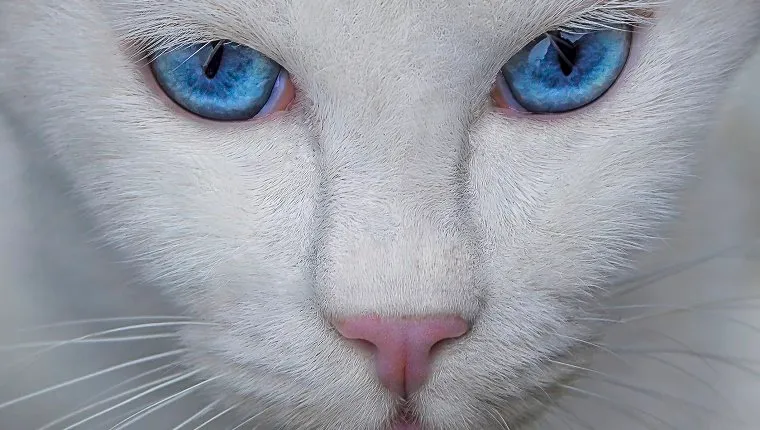
If you have a white cat with blue eyes, their vision is likely fine, but their hearing probably isn’t.
Cats that are completely white in color who also have blue eyes are often deaf or hearing-impaired. These cats should be checked by a veterinarian for hearing problems.
True Albino Cats Have Light-Sensitive Eyes
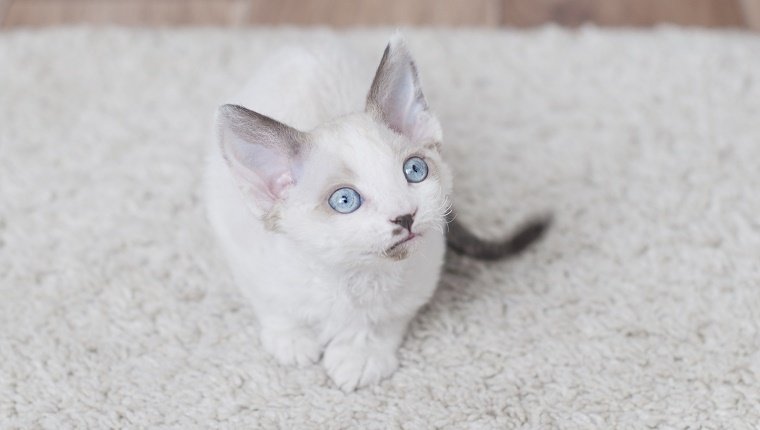
Not all white cats are albinos. Cats who are true albinos will have very, very pale blue eyes or pinkish eyes.
Albino cats may not have great depth perception. Their vision will also be very sensitive to direct sunlight, and their skin will be sensitive, too.
Try to keep your albino cat indoors and away from direct sunlight so they’re not injured.
You Can Test Your Cat’s Vision At Home

A simple test can let you know if your cat’s vision is degenerating. All you need is a pen light and some cotton or a feather, according to The Nest.
First, move your hand very slowly toward your cat’s eyes to see if they blink or turn away.
Next, shine a small, bright pen light in their eye and see if they turn, blink, or squint. See if their pupils constrict when exposed to light, as they should.
Drop a feather or small piece of cotton in front of them to see if they watch it fall to the ground. Try placing objects in front of the places where your cat typically walks to see if they bump into things that aren’t in their proper place.
If your cat’s pupils don’t react to light or if your kitty doesn’t react to any of these tests, something could be wrong. If they bump into unfamiliar items, this could also be a sign that something’s off.
Take your cat to the vet for a checkup. Remember, if you have any doubt at all, take your cat to the vet. Their eyesight is precious and should be protected.
Do you check your cat’s eyes for good health? Do you have any tips for taking care of your kitty’s vision? Let us know in the comments below!
